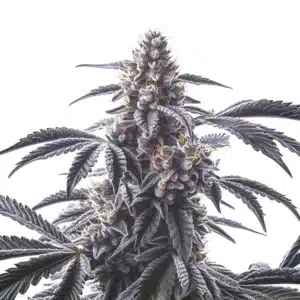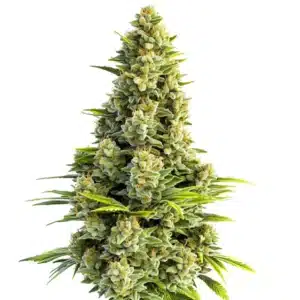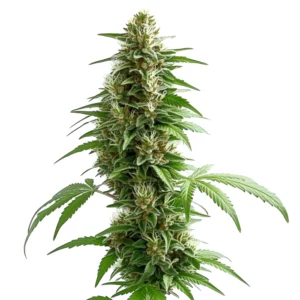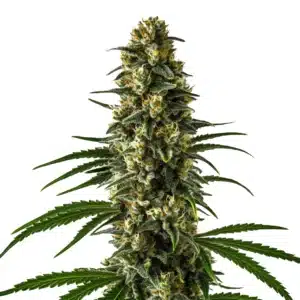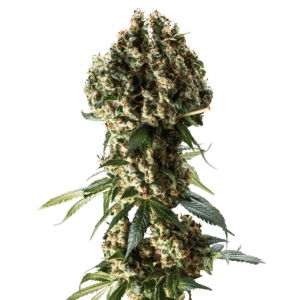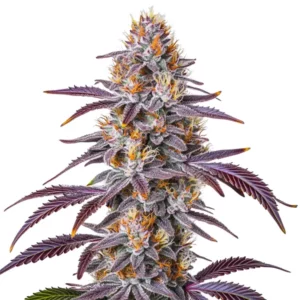
Cannabis and Coconut Oil: Benefits, Uses & How to Make It
Cannabis-infused coconut oil weed recipe is a versatile ingredient with numerous applications, from cooking to skincare. If you’re looking for a step-by-step approach to crafting your own THC-infused coconut oil, here is a detailed guide to make this process simple and effective.
What You Need to Make Cannabis-Infused Coconut Oil Recipe
Ingredients:
- 1 cup of organic coconut oil
- 7-10 grams of cannabis (decarboxylated)
- Cheesecloth or fine strainer
- Glass jar for storage
Tools:
- Double boiler or slow cooker
- Mixing spoon
Promos & Deals
Step-by-Step Process for Making Weed Coconut Oil Guide
- Prepare the Cannabis Start by decarboxylating your cannabis. Preheat your oven to 240°F (115°C). Spread the cannabis evenly on a baking tray lined with parchment paper. Bake it for about 40 minutes, ensuring you stir it occasionally to avoid burning. This step activates the THC and CBD in your cannabis.
- Infuse the Coconut Oil Use a double boiler or slow cooker to melt the coconut oil over low heat. Add the decarboxylated cannabis to the melted coconut oil. Stir the mixture well and let it simmer for 2-3 hours. Keep the temperature low (between 160°F and 200°F) to preserve the cannabinoids.
- Strain the Mixture Once the infusion is complete, strain the mixture through a cheesecloth or fine strainer into a clean glass jar. Squeeze out every last drop of oil while discarding the plant material.
- Store Your Cannabis Coconut Oil Allow the oil to cool completely before sealing the jar. Store it in a cool, dark place for up to two months or in the refrigerator for extended shelf life. Knowing how to store cannabis coconut oil properly ensures maximum potency and freshness.
Making Cannabis Coconut Oil
Ingredients:
- 1 cup coconut oil (preferably unrefined, virgin coconut oil)
- 1 cup decarboxylated cannabis (roughly 7-10 grams)
The recipe can be enhanced by choosing strains like coconut gelato weed strain or coconut kush strain.
Recommended Strains
Green Crack
|
|
THC | 21% (Medium) |
|
|
Type | Feminized |
|
|
Yield | High |
|
|
Phenotype | 35% Indica / 65% Sativa |
Green Crack Auto
|
|
THC | 18% - 20% (Medium) |
|
|
Type | Autoflowering |
|
|
Yield | High |
|
|
Phenotype | 50% Indica / 50% Sativa |
Tools:
- Double boiler or a saucepan and a heatproof bowl
- Cheesecloth or fine mesh strainer
- Glass jar with a tight-fitting lid
- Wooden spoon or silicone spatula
However, methods like cannabis coconut oil extraction make the process cleaner and more efficient.
Instructions:
- Decarboxylate the Cannabis:
- Preheat your oven to 245°F (120°C). This step is essential for activating THC, crucial for recipes like CBD coconut oil recipe or pot coconut oil.
- Break up the cannabis into small pieces and spread it evenly on a baking sheet.
- Bake in the preheated oven for 30-40 minutes, stirring every 10 minutes to ensure even heating. This process activates the THC in the cannabis.
- Melt the Coconut Oil:
- In a double boiler or a saucepan, melt the coconut oil over low heat. If you’re using a saucepan, place a heatproof bowl on top to create a double boiler effect. This helps prevent burning the oil. A step integral for crafting a cannabis-infused coconut oil recipe. Be sure the oil temperature stays low to preserve the cannabinoids.
- Add the Decarboxylated Cannabis:
- Once the coconut oil has melted, add the decarboxylated cannabis to the oil. Stir well to ensure the cannabis is fully immersed in the oil.
- Infuse the Oil:
- Maintain a low heat (ideally between 160-200°F or 70-93°C) and let the mixture simmer for 2-3 hours. Stir occasionally. Be careful not to let the oil get too hot, as this can degrade the cannabinoids. Use methods like double infused coconut oil for stronger recipes.
- After 2-3 hours, remove the mixture from the heat and let it cool slightly.
- Strain the Oil:
- Line a strainer or funnel with cheesecloth and place it over a glass jar or container.
- Carefully pour the mixture through the cheesecloth to strain out the cannabis solids. Use a wooden spoon or spatula to press the oil out of the cheesecloth, ensuring you extract as much oil as possible. For edibles, this ensures smooth integration of your coconut oil for edibles or weed coconut oil recipe.
- Store the weed and coconut oil:
- Seal the jar with a tight-fitting lid and store the cannabis-infused coconut oil in a cool, dark place. It can also be refrigerated for longer shelf life.
Usage: Cannabis-infused coconut oil can be used in a variety of recipes, from baked goods to savory dishes. It can also be used topically or in homemade edibles.
Note: Always start with a small amount to gauge the potency, especially if you’re new to cannabis-infused edibles. The effects can take up to 2 hours to be felt.

Benefits of Cannabis Coconut Oil
Cooking and Baking
Cannabis coconut oil is a fantastic base for edibles, demonstrating various cannabis coconut oil uses in the kitchen. It can be prepared using the cannabis coconut oil slow cooker method, which ensures gentle infusion and preserves cannabinoids. This oil can be substituted for butter or other oils in recipes. Whether making brownies, cookies, or savory dishes, the oil integrates seamlessly.
Skincare
Use cannabis coconut oil uses like topical lotions or skincare by mixing it with essential oils. This enhances the moisturizing benefits.
Benefits of CBD Coconut Oil
Improves metabolism due to MCTs in coconut oil weed recipe. – Combats inflammation and enhances heart health. – When stored properly, how to store cannabis coconut oil ensures you retain these benefits for extended use.
Variations of the Recipe

Double Infused Coconut Oil
For stronger potency, repeat the infusion process with fresh cannabis after straining the first batch. This double infused coconut oil is ideal for those looking for higher cannabinoid content.
Coconut Gelato Weed Strain Infusion
Using specific strains like the Coconut Gelato weed strain or Coconut Kush strain can enhance the flavor and effects of your oil. These strains pair well with the natural richness of coconut oil.
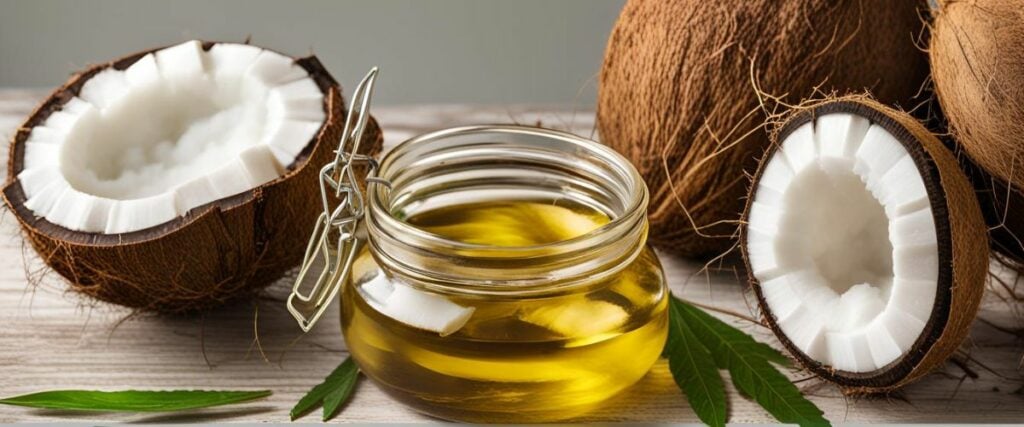
Applications of Cannabis and Coconut Oil Recipe
- Coconut Oil for Edibles: Use your infused oil to make gummies, chocolates, or even salad dressings.
- Coconut Oil Edibles: This oil serves as a base for delicious treats, making it easy to dose and enjoy.
- Canna Coconut Oil for Skincare: Add it to homemade soaps or apply it directly to your skin for hydration.
Tips for Success
- Ensure your cannabis is fully decarboxylated for maximum potency.
- Maintain a consistent low temperature during the infusion to avoid cannabinoid degradation.
- Use high-quality, organic coconut oil for the best results.
By following this guide, you can master the art of crafting your own cannabis-infused coconut oil. Experiment with different strains, such as Coconut Kush or Coconut Gelato, to tailor the oil to your preferences. This infused coconut oil recipe offers a simple and flexible way to enjoy the benefits of cannabis in everyday life.
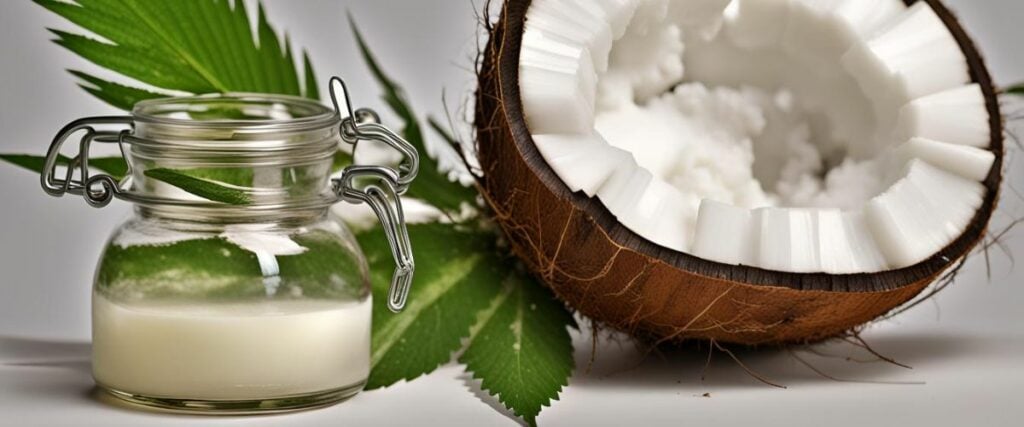
FAQs about coconut oil weed recipe
How Long to Cook Cannabis Coconut Oil?
Cooking weed infused coconut oil typically takes 4–6 hours on low heat. This ensures the cannabinoids are fully extracted without degrading the oil’s quality. Using a slow cooker or double boiler helps maintain a consistent temperature, preventing the oil from overheating and preserving its potency.
What Is The Best Straining Method for Cannabis Coconut Oil?
The best straining method involves using a fine mesh strainer or cheesecloth. This removes all plant material, resulting in a smooth, clean oil suitable for various uses. Ensure the oil is slightly cooled before straining to prevent burns. Proper straining enhances the texture and quality of your cannabis coconut oil.
Do I Need to Decarb My Flower To Make Cannabis-Infused Coconut Oil?
Yes, decarboxylation is necessary to activate the THC in your cannabis. Without this step, the cannabinoids will not be psychoactive, and the oil will be less effective. Proper decarboxylation involves heating the cannabis at 245°F for 30-40 minutes, ensuring even activation of the cannabinoids.
Is Lecithin Necessary to Use?
Lecithin is not required but can enhance the absorption of THC in your body. It acts as an emulsifier, ensuring even distribution of cannabinoids in your edibles. Adding lecithin can improve the consistency and potency of your cannabis-infused coconut oil, making it a valuable addition for those seeking stronger effects.
How Do I Calculate The Right Dose?
To calculate the right dose, consider the potency of your cannabis and the amount used in the infusion. Start with a small dose and increase gradually based on your tolerance and desired effects. Using a dosage calculator can help ensure accuracy and prevent overconsumption, providing a safe and enjoyable experience.



